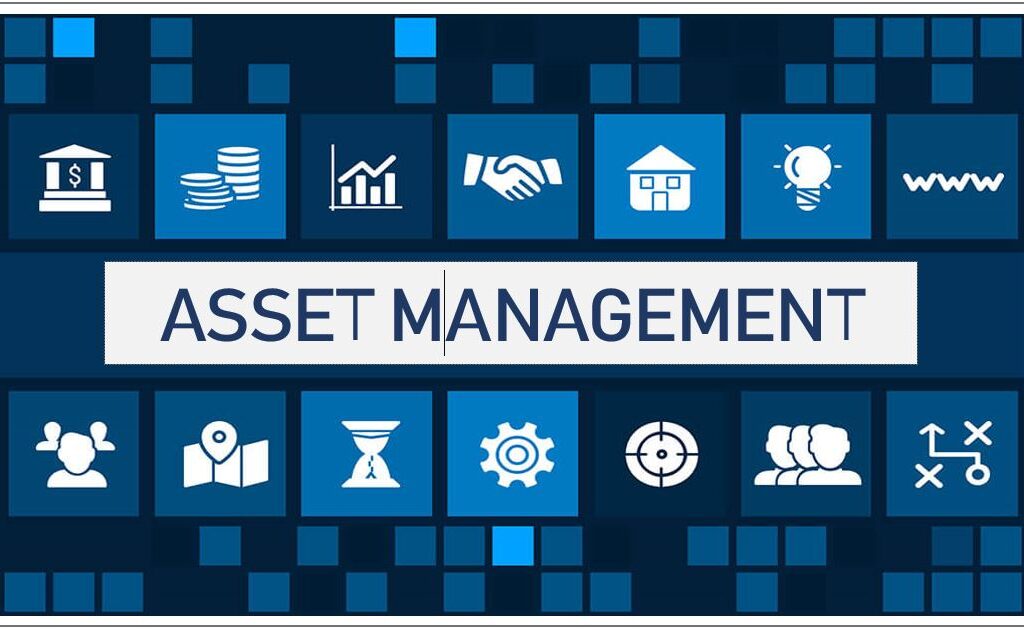Asset management is the process of developing, operating, maintaining, & selling assets in a cost-effective manner. The term is most commonly used in finance to refer to individuals or companies that manage assets on behalf of individuals or other companies.
Every business needs to track its assets. In this way, stakeholders will know which assets can be utilized to generate optimal returns. The company’s assets fall primarily into the two categories:
Fixed and Current assets.
Fixed assets are assets acquired for long-term use and current assets are assets that can be turned into cash in a short period of time.
When it comes to asset management, a manager is often primarily concerned with two concerns. First, what role does the asset management process play? Second, how can a company develop a good asset management plan?

Table of Contents
- Asset Management System
- Importance of Asset Management
- Developing a Strategic Asset Management Plan
- Asset Management Process
- Types of Asset Management
- Benefits of Asset Management
- A Career in Asset Management
- Summary
- FAQs: Frequently Asked Questions:
Asset Management System
An asset management system is a framework that facilitates the use of various enterprise software, applications, and infrastructure to strategically plan & manage your assets. The system focuses on optimal returns and balanced risks. In addition, monitor asset performance over the life of the asset.
In other words, it simplifies tracking company assets and their health, enabling better planning. To maximize returns, the cost of maintaining assets under management and fixed assets should be minimized. Assets include financial, real estate, factories, equipment, IT, or human resources. Ivanti, GoCodes, Asset Panda, and InvGate are popular asset management software.
Importance of Asset Management
There are several reasons why companies should be interested in asset management.
Enables a company to account for all of its assets
This process allows companies to easily track their assets, whether they are liquid or fixed. Business owners know where their assets are, how they are used, and if changes have been made to their assets. As a result, asset recovery can be done more efficiently, leading to higher returns.
Helping in the accuracy of amortization rates
As assets are reviewed on a regular basis, the asset management process ensures that the financial statements appropriately reflect assets.
Helping in identifying & managing risks
Asset management involves identifying & managing risks arising from the use and ownership of specific assets. This means companies are always prepared to manage risk.
Helps to eradicate ghost assets in the company’s inventory
Lost, damaged, or stolen assets may be incorrectly recorded in the company’s books. A strategic asset management plan enables business owners to become aware of lost assets and remove them from their books.
Developing a Strategic Asset Management Plan
Asset ownership is part of a public or private company. To manage assets effectively, business owners need to develop a strategic plan.
List out all the assets in an asset inventory
First and foremost, owners must count all assets they own. If you don’t know the exact number of assets in your inventory, you can’t manage them effectively. When preparing an inventory of company assets, you should include:
- Total number of assets
- What are the type of assets and where are they
- Value of each asset
- when the assets are acquired
- Expected lifecycle of the asset
Total life-cycle costs of Asset
If business owners want an accurate asset management plan, they need to calculate the total life cycle cost of each asset. Many business owners make the mistake of only calculating initial costs.
Additional costs can occur during the life cycle of an asset, such as maintenance costs, condition and performance modeling, and disposal costs.
Set service levels
After calculating life cycle costs, the next step is to set service tiers. Simply put, this means outlining the overall quality, capacity, and role of the various services that the asset provides. In this way, business owners can determine the operational, maintenance, and renewal activities necessary to keep their assets in good condition.
Proper financial planning for long-term
Ideally, the asset management process employed by business owners should be easily translatable into long-term financial planning. With proper financial planning, owners can assess which goals are achievable and which should be prioritized.
Asset Management Process
The following steps are required in the asset management process:
- First, existing assets are evaluated. Portfolio needs and objectives are established.
- Diagnose the health of your existing assets and determine if you are meeting your financial goals.
- It is then determined how well the asset meets its purpose.
- The feasibility of future ventures is determined. Based on future requirements, new asset needs are identified.
- The asset manager then analyzes the asset’s lifecycle and efficiency to determine maintenance costs.
- Evaluation of the depreciation rate of assets & their overall impact. Potential risks associated with each asset are quantified.
- Finally, the Asset Manager predicts the life and residual value of each asset, and disposal strategies.
Types of Asset Management
Following are the types of asset management:
FAM (Financial Asset Management)
It refers to the strategic allocation of funds to various financial market instruments such as mutual funds, stocks, bonds, futures, and derivatives.
Fixed Asset Management
Physical assets, machinery, equipment, and other tangible assets are necessary for a business to function, and regulations for these assets fall into this category.
Infrastructure Asset Management
Facilities that ensure connectivity and accessibility are national assets. This includes roads, bridges, transport, internet, electricity, and telephones. In infrastructure assets, managers focus on developing, improving, and updating facilities.
Real Estate Asset Management:
These asset management companies fund the purchase or construction of commercial properties.
ITAM (IT Asset Management)
Information technology is an integral part of the corporate world and this field deals with software and hardware assets. This includes computer systems, software, hardware, licenses, networks & applications.
DAM (Digital Asset Management):
Digital assets such as content, social media presence, websites, media, and other intellectual property are regulated by DAM.
EAM (Enterprise Asset Management):
EAM covers both tangible assets and the company’s intangible assets. It is responsible for infrastructure, software, documentation, facilities, and processes.
Benefits of Asset Management
Adopting an asset management strategy provides many benefits, including:
1. Improving acquisition & utilization
By tracking company assets throughout their lifecycle, company owners can improve their techniques for acquiring and utilizing assets. A good example is Cisco Systems, which was able to reduce costs by implementing PC asset management. In implementing such a strategy, the company discovered wasteful purchasing practices and resolved them by developing a better process for purchasing the necessary equipment workers.
2. Improving accessibility
Government agencies, non-profit organizations, and businesses are required to provide comprehensive reports on how assets are acquired, used, and disposed of. Most of them record their asset information in a central database to simplify the reporting process. This way, if you need to edit the report at the end of the fiscal year, you will have easy access to all the information you need.
A Career in Asset Management
Asset management is a promising career option. Careers in asset management firms include financial analysts, financial advisors, investment brokers, portfolio managers, and asset managers. Most Asset Management Companies are mutual fund companies or investment banks. Applicants must first have a degree in Finance or Economics. Candidates can earn advanced financial certifications
There are also degree programs such as Chartered Financial Analyst (CFA), MBA Finance, and FINRA Series Six exams. After that, with additional experience, analysts can progress to consultants and even managers. The only way to succeed in this career is to build effective relationships and grow your customer base. Glassdoor reports that US wealth managers are being offered an average of $95,002. The base salary starts at $56,000 and goes up to $200,000.
Summary
Successful asset management is critical to the success of any organization. It is a system that helps businesses keep track of all their assets such as vehicles, equipment, and investments. Especially since long-lived infrastructure assets and large capital commitments form the basis of economic activity. The more complex an organization becomes, the more important it is to have a solid asset management process.
Manual asset management practices can get the job done, but employees must manually resolve many details to ensure the organization is making the most of its available assets. By implementing asset management tools, businesses can manage assets and easily execute asset management plans.
FAQs: Frequently Asked Questions:
What is Asset Management?
Asset management is the process of developing, operating, maintaining, and selling assets in a cost-effective manner.
What are asset management companies?
An asset manager creates a portfolio of assets. They streamline their clients’ financial resources into suitable investment options. The objective of Assets Management Companies is to generate e maximum return and reduce risk.
Is asset management a good career?
Asset management is a rewarding career option. A wide range of opportunities is available for aspirants at leading financial firms such as JP Morgan, Wells Fargo, Morgan Stanley, and Deutsche Bank. Growth opportunities are even better than in the banking sector. Motivated candidates should have analytical skills, market knowledge, decision-making skills, problem-solving, and communication skills.
What is asset lifecycle?
The life cycle of an asset is the number of stages an organization’s asset goes through during the life of the asset’s owner. The period during which a company can effectively and efficiently use its assets to achieve its business goals. The lifecycle of an asset typically includes all phases of an asset’s lifecycle, from acquisition to maintenance to final disposal.
What are some of the best Assets Management Companies?
The top Assets Management Companies all across the globe are as follows:
- BlackRock
- UBS Group
- Fidelity Investment
- Vanguard Group
- State Street Global Advisors



